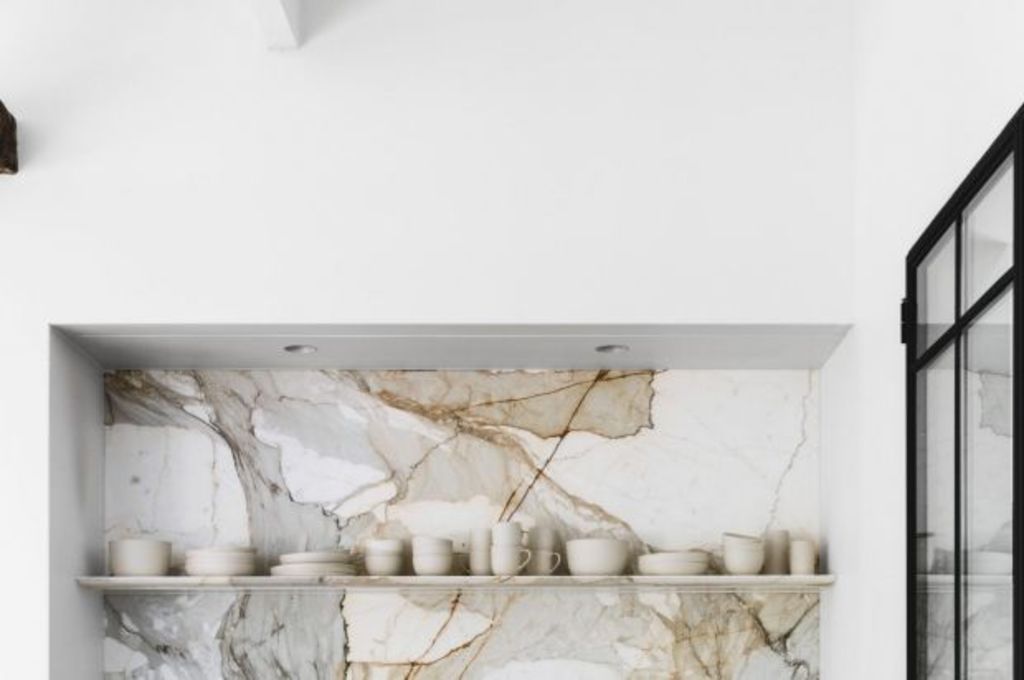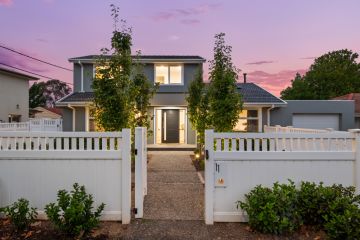The women who design Australia’s most incredible kitchens

When it comes to the world of kitchen design, the talented women behind Australia’s most beautiful interiors all agree that blissful livability requires careful planning, functionality and very good design.
We asked these five award-winning designers to reveal their secrets to designing a kitchen that is as stylish as it is warm.
Carole Whiting, Carole Whiting Interiors and Design

Carole Whiting. Photo: Bronwyn Kidd
Carole Whiting prefers a quiet kitchen. “It shouldn’t shout at you, but sit on the landscape of the house, with the materials and forms appearing as comfortable there as they would in the living room.”
Whiting, who picked up the 2016 Belle Coco Republic Interior Awards for Best Kitchen Design, says planning and functionality are vital. “Everyone operates differently in their space, so it’s important to establish this quickly.”

Carole Whiting picked up the 2016 Belle Coco Republic Interior Awards for Best Kitchen Design. Photo: Tatjana Plitt
She carves out zones within the space that denote areas with differing functions. “Wet, cooking, and food storage zones are universal and work in any size space.”
For a family-friendly layout with longevity, Whiting says seamless integration and contemporary design is just the ticket. “I hate the word ‘trends’,” she says. “The kitchen should look as relevant in 10 years as it does now.”
Tania Handelsmann & Gillian Khaw, Handelsmann + Khaw

Tania Handelsmann & Gillian Khaw. Photo: Cybele Malinowskijpg
- Related: Is the kitchen the most important room?
- Related: The hottest kitchen trends for 2017
- Related: Top five kitchen renovation tips
With a slew of international design projects between them, Tania Handelsmann and Gillian Khaw launched their practice last year. Their shared love of natural materials is central to their aesthetic. “We prefer bold marbles and warm textured finishes,” says Handelsmann. “It’s an aesthetic that is unachievable using man-made materials.”
Handelsmann says that the traditional work triangle format (where the refrigerator, range and sink, form a user-friendly triangle) has evolved. “Now it includes a separate butler’s pantry with a second sink, fridge and bench space, a dining zone, and charging station.”

Tania Handelsmann and Gillian Khaw launched their practice last year. Photo: Felix Forest
Large appliances, she says, should be treated like art. “If they are beautifully designed they should be displayed proudly.”
While a beautiful oven can enhance a space, smaller appliances should be concealed. “Storage niches are a must,” she says.
Madeline Blanchfield, Madeline Blanchfield Architects

Madeline Blanchfield. Photo: Robert White
Madeline Blanchfield and her team of eight deliver some of Sydney’s most coveted residences. Her muted palettes, rich textures and sophisticated finishes combine for a chic but warm aesthetic.
For her, the kitchen’s location is pivotal. “We consider how it relates to the garden, other spaces and how open or closed it is to other rooms.”

Consistency is key to Madeline Blanchfield’s design. Photo: Prue Roscoe
Identifying clients’ personal traits, and using the work triangle format is key. “Long kitchens with the cooking, washing and fridge zones in a row, rather than a triangle, can be frustrating,” she says. “We determine the client’s everyday preferences, and usually end up with an appliance cupboard in the main kitchen, and a large separate pantry and/or butlers’ kitchen.”
Blanchfield chooses finishes that are consistent throughout the house. “We select a finish that blends the back of the kitchen with surrounding walls, and make a feature of the island.”
Nina Maya, Nina Maya Interiors

Nina May. Photo: Felix Forest
Nina May’s skill at meticulously layering spaces with sumptuous detail is her stock-in-trade. “We create a modern, contemporary feel with high attention to detail,” she says.
With a background in textiles and design, Maya approaches projects with her eye firmly on the big picture. “I define the overall look and the key feature first,” she says. “If beautiful marble is the focus, I select the slab, then match complementary cabinetry and finishes.”

Nina Maya approaches projects with her eye firmly on the big picture. Photo: Felix Forest
Whilst Maya works in a highly refined neutral palette that restricts the materials used, her preference for refined polish doesn’t cloud her fondness for unique touches. “Each kitchen should be distinctive,” she says. “Custom detailing in bespoke joinery and handmade accessories like leather handles is a wonderful way to achieve this.”
We recommend
We thought you might like
States
Capital Cities
Capital Cities - Rentals
Popular Areas
Allhomes
More






